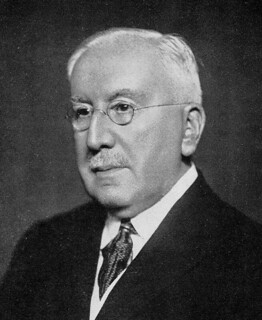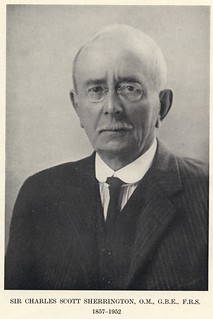- Creation
-
Creators (Definite): Sir Charles Alfred Ballance; Sir Charles Scott Sherrington; The Cambridge Scientific Instrument CompanyDate: 1889
- Current Holder(s)
-
- No links match your filters. Clear Filters
-
Cited by
 C.A. Ballance and C.S. Sherrington, 'On Formation of Scar-Tissue', Journal of Physiology 10 (6), (1889), pp. 550-578.
C.A. Ballance and C.S. Sherrington, 'On Formation of Scar-Tissue', Journal of Physiology 10 (6), (1889), pp. 550-578.
Tags: osmic acid, logwood
Description:Explanation of Plate XXXII (figs. 6-13):
'Fig. 6. Giant cells from chamber 72 hours in the peritoneal cavity (rabbit). Zeiss apochr. system, ocul. 5. Osmic acid vapour.
Fig. 7. Plasma-cells from same preparation which furnished Fig. 6.
Fig. 8. " Cell islet " from inflammatory film obtained in a chamber left eight days in the subcutaneous tissue of the guinea-pig, At the margin it is united to outlying plasma-cells. Zeiss oil, oc. 4. Osmic acid vapour.
Fig. 9. Young cicatricial tissue of anastomosing branched cells, some of which are represented under the higher magnification in Fig. 17. From a thrombosed artery (syphilis) near the centre of the thrombus. Zeiss A, oc. 3. Logwood. Preparation kindly shown us by Dr Seymour Sharkey.
Fig. 10. "Cell islet" from inflammatory membrane obtained from chamber five days in the peritoneal cavity of the rabbit. Osmic acid solution. Zeiss oil imm. and oc. 2.
Fig. 11. Mass of blood-cells (? clot) surrounded by fibroblastic cells, and invaded by them at four places. Inflammatory membrane from chamber eight days in subcutaneous tissue. Magnification as in preceding, and prepared in similar manner.
Fig. 12. Fusiform plasma-cell (fibroblast) surrounded by a fibrillated material which forms a thread-like band of connective tissue. Zeiss oil and oc. 4. Osmic vapour. From chamber 10 days in subcutaneous tissue.
Fig. 13. Similar but larger and thicker fibrous band from same preparation. Similar preparation and magnification.' (575-576)
Figs. 6-8 in text:
'The preparations gave an almxiost bewildering number of examples of the infinite variation in shape of the large amoeboid plasma-cells, which also varied very considerably in size, and as to granules. The body of the cell was for the most part plate-like, being in many instances extended into so thin a film that its exact limit was hard to determine, especially when, as occasionally happened, the granules of the cell-body were less pronounced towards the periphery. Some idea of the wide diversity of outline exhibited by individual cells may be gathered from our figures. Cf Figs. 1, 4, 5, 6, 7 and 8, Plates XXXI. and XXXII.' (558)
Fig. 6 in text:
'There were present also in chambers of eighteen hours', twentytwo hours', twenty-six hours', forty-eight hours', and seventy-two hours' standing, as also in others of older date containing well formed granulation tissue, many giant cells (Fig. 6) - huge multi-nucleate cells, that obviously in many instances were cell-fusions. ' (560)
Figs. 7-8 in text:
'Contiguous plasma-cells or even those a little distance apart were often connected together by their processes (Figs. 1, 5, 7 and 8, Plates XXXI. and XXXII.). The bands of connection might be short thick arms or long gossamer threads of protoplasm. By similar arms and threads the cells seemed to adhere to the most diverse objects in their surrounding. The surface of the cover-glass, a filamllent of fibrin, a hair, a fibre of cotton, a lump of the cement fastening the sides of the chamber together, all afforded points to which the processes from the plasma-cells would cling (Figs. 14 and 15).' (560)
Figs. 8-9 in text:
'In membranes of ten, fourteen, and even eighteen days' growth, not all the cells nor even the majority were spindle-shaped. A vast number were triradiate, and multiradiate; some had but one process; very few were rounded. Many recalled to mind the branched fixed corpuscles of the cornea. Long tapering branches united cell to cell, not only the cells of one plane one with another, but the cells of different planes also (Figs. 8, 9 and 17). A meshwork of infinite variety and complexity was thus established. But in all these examples of plasma cells in the stable as well as in the previously described labile forms, the granular nature of the cell substance and the clear oval nucleus were characters never lost.' (563)
Figs. 8 and 10 in text:
'in the specimens of more than forty-eight hours' duration, the plasma-cells begin to apply themselves to the islet-groups of leucocytes. Cf. Figs. 8 and 10. They surround the leucocytes. The islets come to consist of a central portion made up of leucocytes, and an outer zone of large and granular plasma-cells. In this way the islets seem to increase rapidly in size. Neighbouring islets appear to become merged together.' (561)
Fig. 11 in text:
'It was among the plasma-cells of the fringe of the islets that we noticed the earliest regularly fusiform cells, the immediate precursors of fibrous elements in the new tissue. It is true that plasma-cells of an irregular spindle-shape were observable not rarely among even the earliest of the plasma-cell swarm entering the chamber. But in those instances the outline was probably but one of many which the amoeboid cell successively assumed, and generally it was not of the same character as the regularly fusiform type prevailing among these plasma-cells in the outskirts of an islet. In that latter the majority of the cells lay in lines concentrically set about a core of ill-stained, broken-down matter that composed the centre of the mass. Cf. Fig. 11, Pl. XXXII. The fusiform fibroblasts began in fact the encapsulation of the débris of the breaking-down blood cells, &c.' (526)
Figs. 12-13 in text:
'Older specimens revealed further progress in the formation of a fibrous-tissue membrane. After a stay of eight days, or ten days, or fourteen days in the subcutaneous tissue in many instances the islets consisted of plasma-cells alone. The leucocytes had disappeared. The pigmented remnants of the red blood corpuscles were much longer traceable. In many places along certain lines the spindle-shaped cells had become attenuated, and formed distinct bands and often long and delicate cords (Figs. 12, 13). In many places in the tenth day specimens, and in some of the eighth day ones an inter-cellular substance showing fibrillation exists (Fig. 12).' (562)










